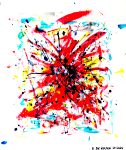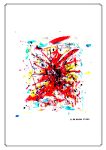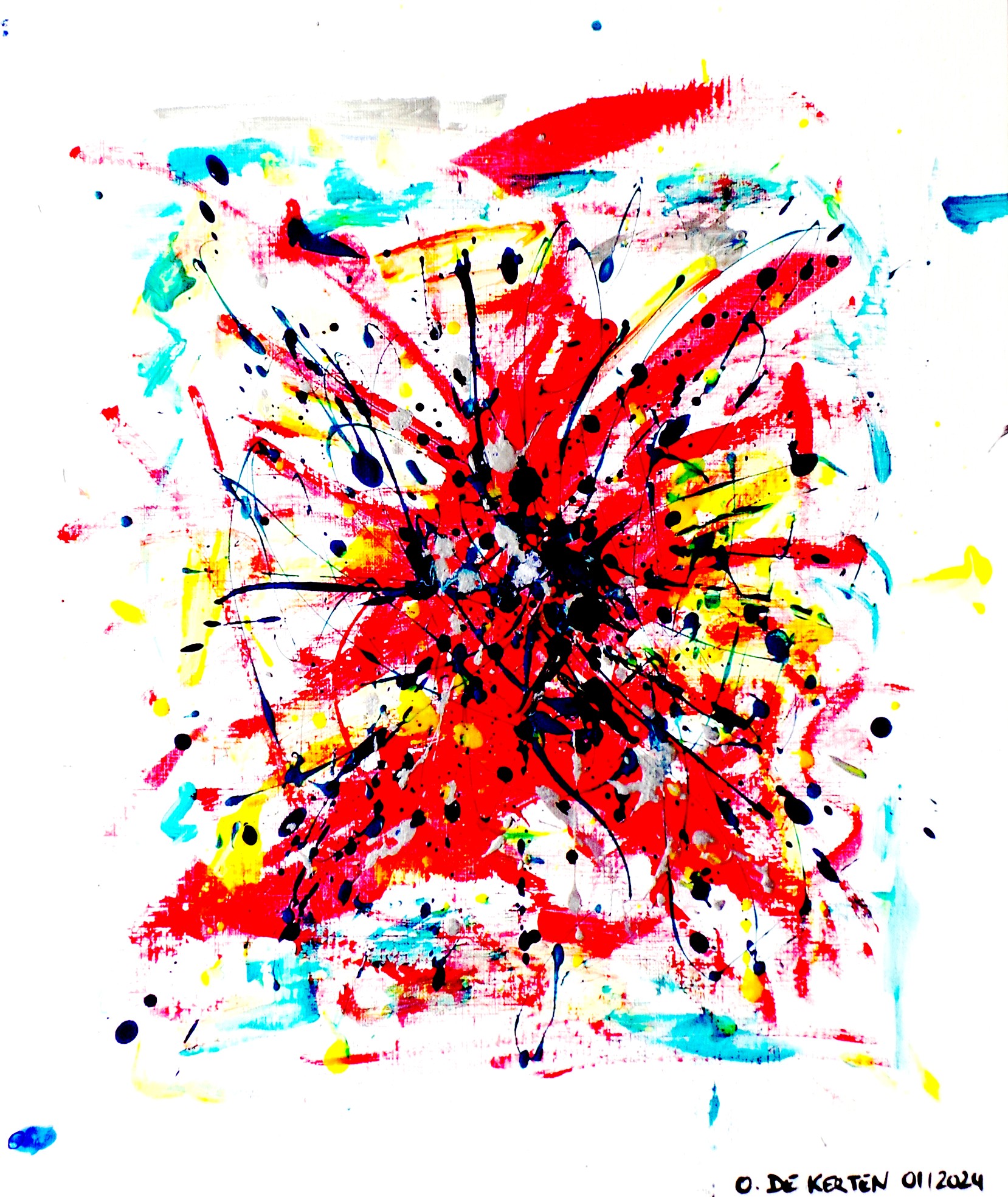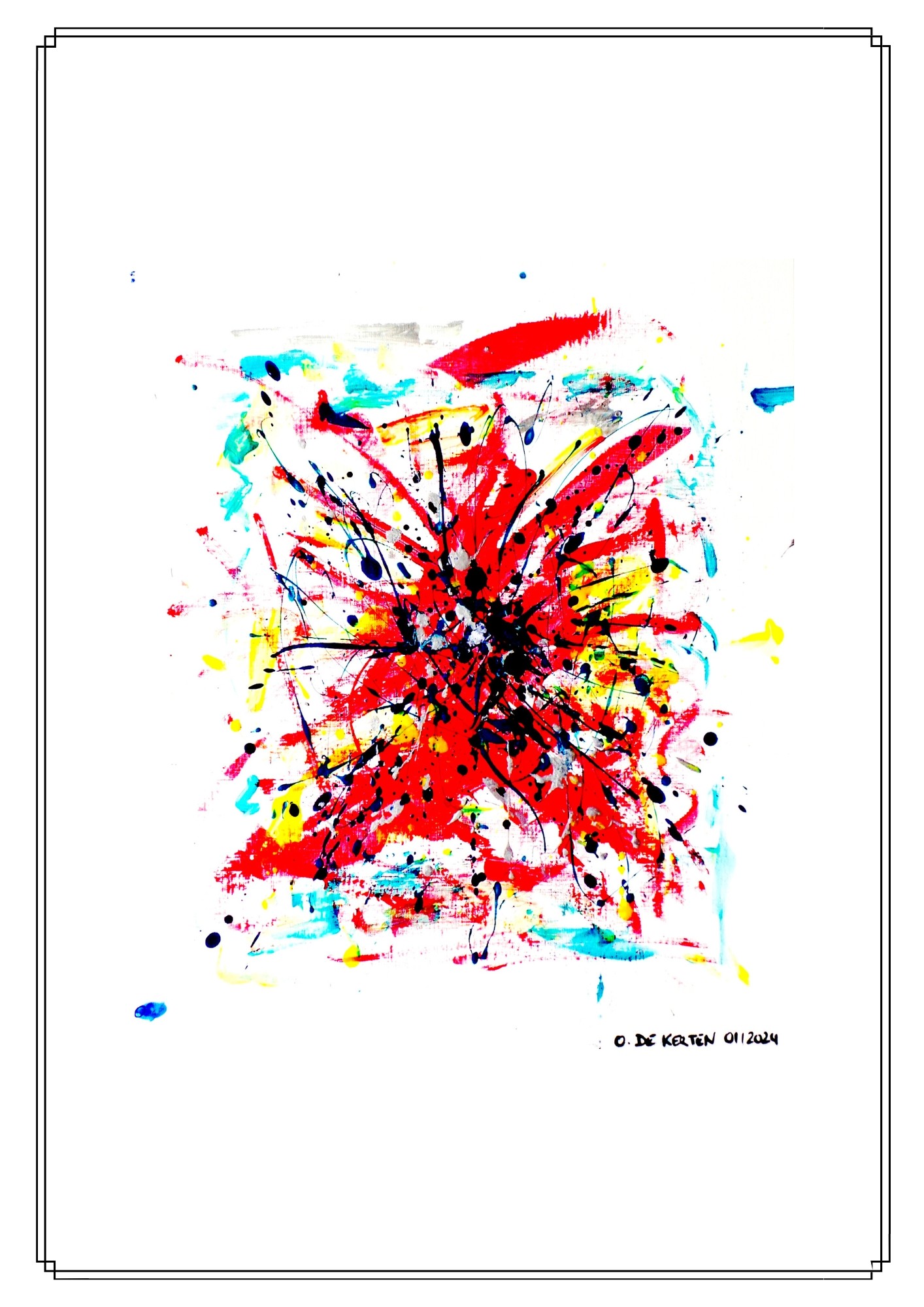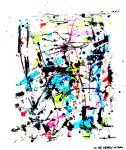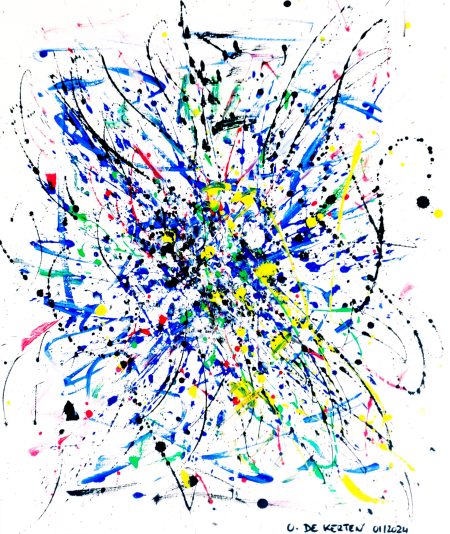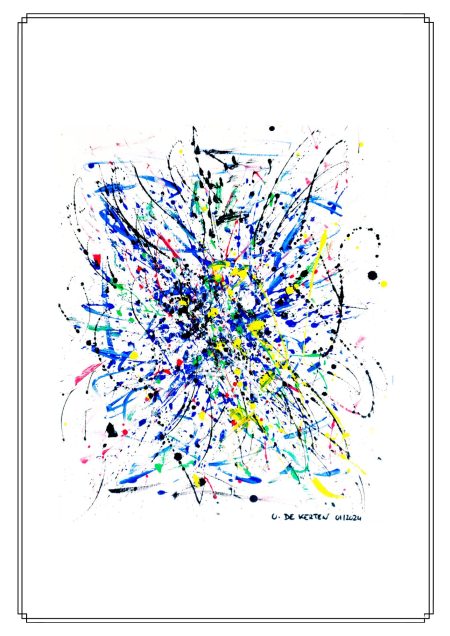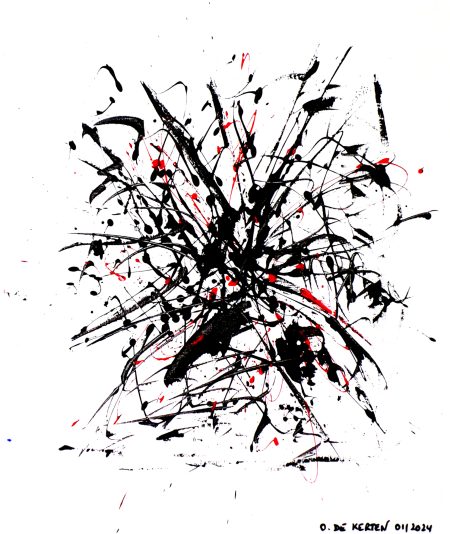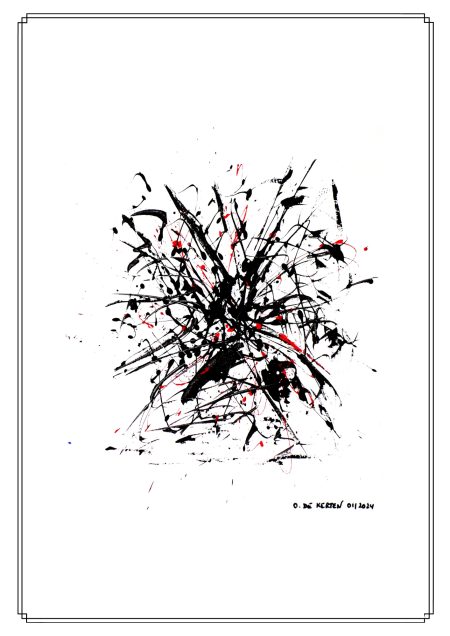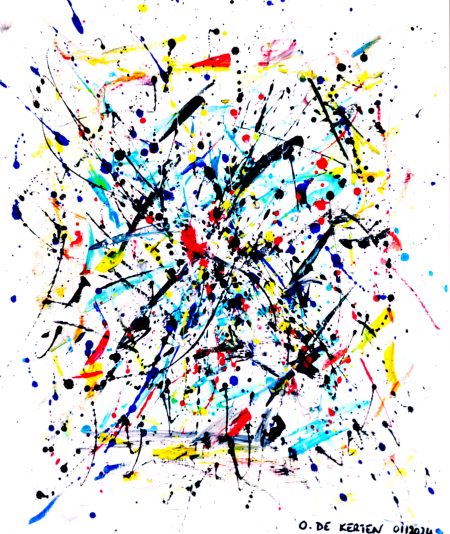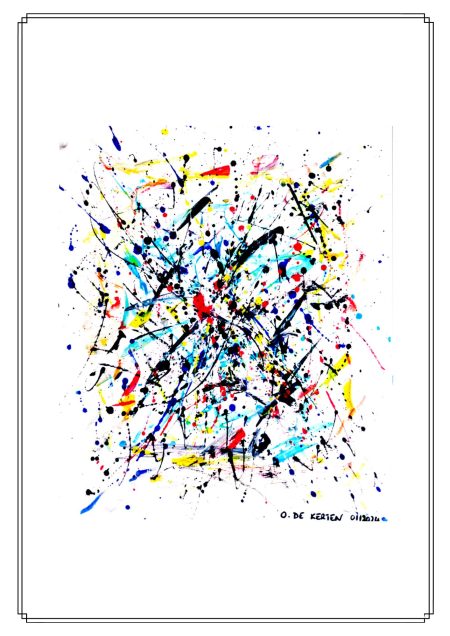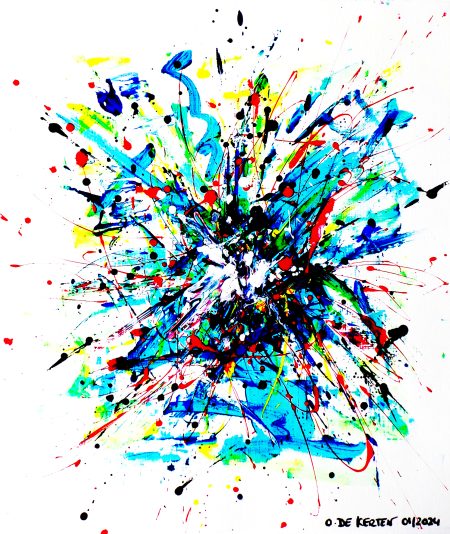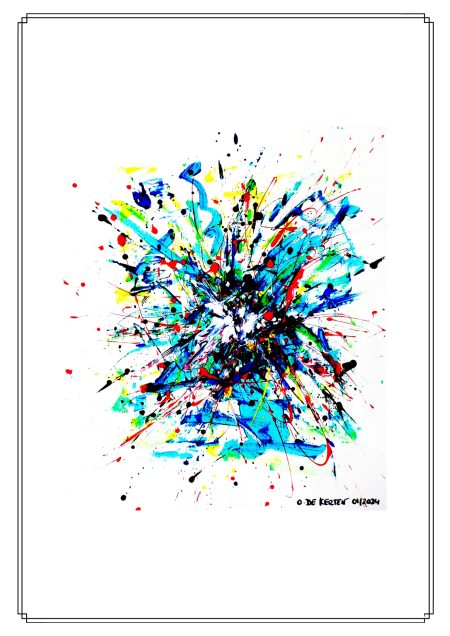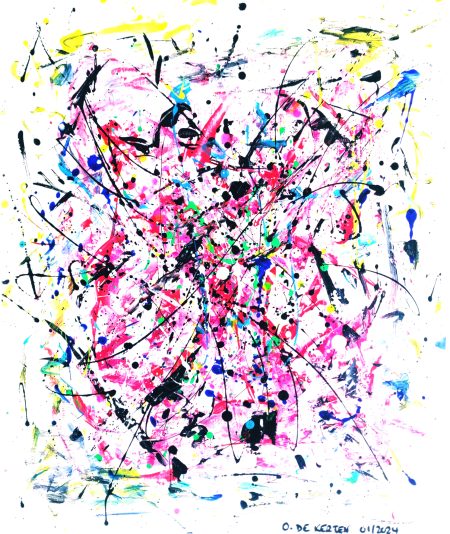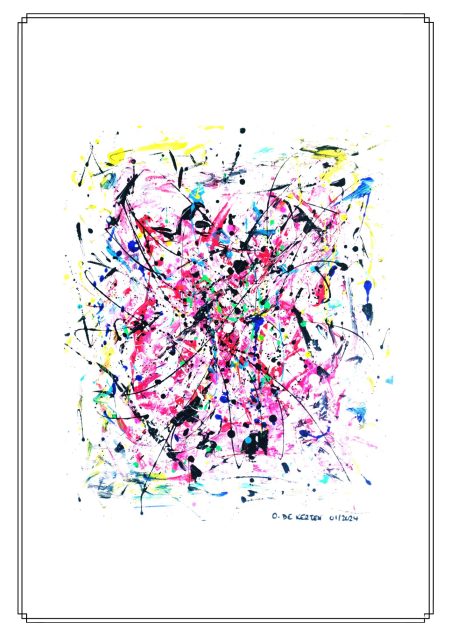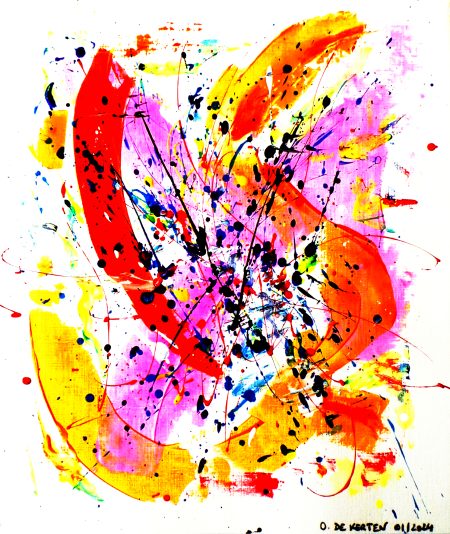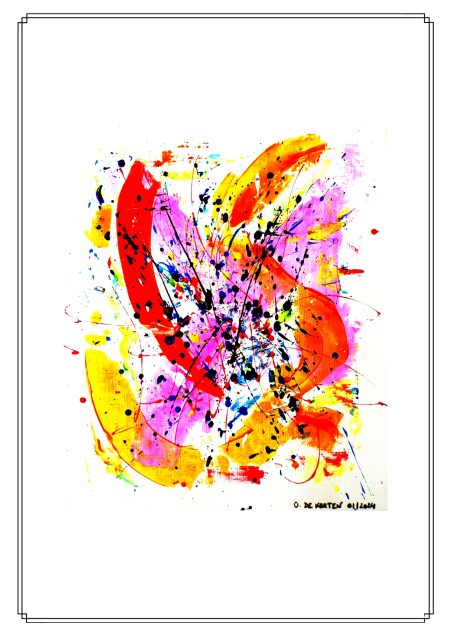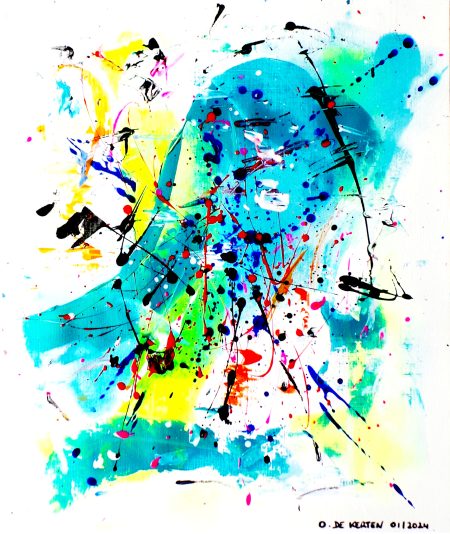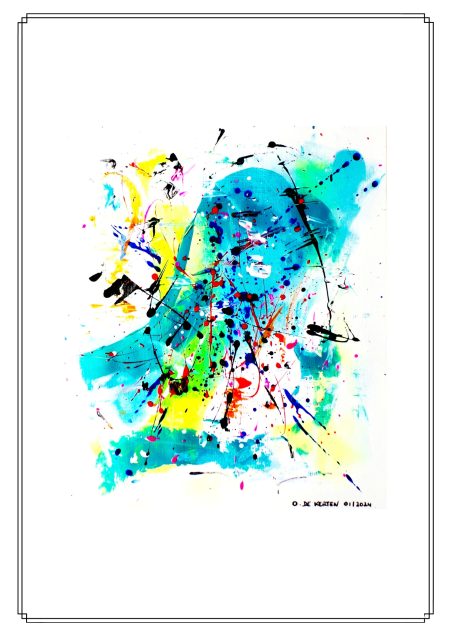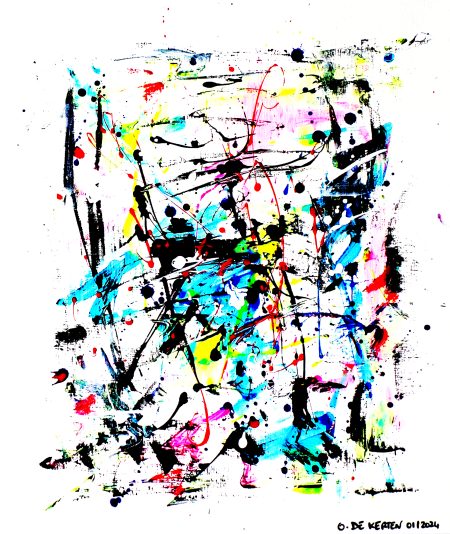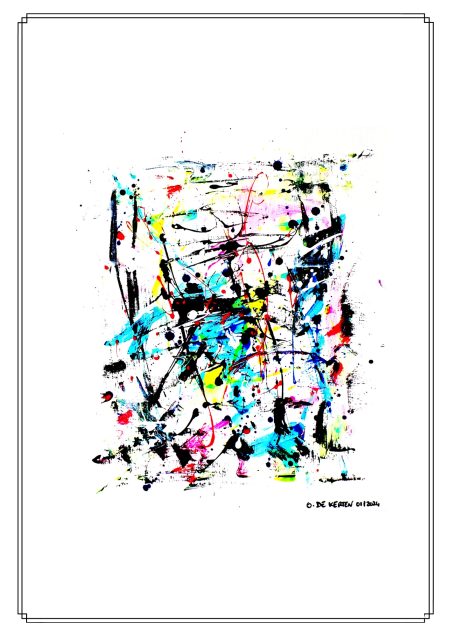Tiempo antes de cero nº1 (Pintura acrílica sobre papel de 290 g/m²)
€150
La pintura presenta una explosión caótica de colores, predominantemente en rojo, con salpicaduras y vetas de azul, amarillo, negro y blanco. Estos colores crean una composición vibrante y enérgica.
-
Euro (€) - EUR
-
dólar de los Estados Unidos ($) - Dólar estadounidense
-
libra esterlina (£) - GBP
La pintura presenta una explosión caótica de colores, predominantemente en rojo, con salpicaduras y vetas de azul, amarillo, negro y blanco. Estos colores crean una composición vibrante y enérgica. Los colores parecen irradiar desde un punto central hacia los bordes del lienzo, creando un efecto explosivo y dinámico. Esto atrae la mirada del espectador hacia el centro y luego hacia afuera. Las salpicaduras y vetas de pintura agregan una calidad táctil, haciendo que la pintura se sienta más tridimensional y viva.
La explosión caótica de colores y líneas dinámicas puede evocar sentimientos de excitación, caos o incluso agresión. Puede representar un estallido de creatividad o un momento de intensa emoción. Las líneas y salpicaduras que irradian sugieren movimiento y acción, como si la pintura estuviera capturando un momento de energía explosiva. Como pieza abstracta, deja mucho a la interpretación del espectador. Diferentes personas pueden ver cosas diferentes en la pintura, desde una representación de un evento caótico hasta una exploración puramente estética del color y la forma.
Grano de lona de Canson® Acrílico
El papel utilizado para esta obra de arte es Canson® Papel acrílico de 290 g/m2 (290 g/m2) ideal para la pintura acrílica. Este papel se distingue por su grosor y resistencia, dos cualidades esenciales para satisfacer las exigencias de esta técnica. Su nueva textura reproduce la trama aleatoria del lino para una mejor adherencia de la pintura. El grano del lienzo de Canson® El acrílico es especialmente adecuado para trabajar con pintura diluida aplicada en capas finas, para crear capas transparentes. También se puede utilizar para superponer varias capas de pintura opaca sin diluir para lograr efectos de empastado notables.Productos relacionados
“Time before zero, edition nr9” es una pintura acrílica abstracta sobre papel (36x46cm, 15×18 pulgadas) del artista Olivier De Kerten. La vibrante composición presenta salpicaduras, goteos y trazos caóticos en colores como azul, rojo, amarillo y negro sobre un fondo blanco.
Agotado
Esta pintura abstracta presenta una disposición caótica de líneas negras y rojas, salpicaduras y formas sobre un fondo blanco.
Agotado
“Time before zero, edition nr.9” es una pintura abstracta original en acrílico sobre papel (36x46cm, 15×18 pulgadas) del artista Olivier De Kerten. La vibrante composición presenta salpicaduras, goteos y trazos caóticos en colores como azul, rojo, amarillo y negro sobre un fondo blanco.
1 disponibles
Esta pintura es una pieza abstracta sorprendente. Presenta una explosión central de tonos negros, azules y verdes, rodeada de salpicaduras de pintura roja, amarilla y azul.
1 disponibles
La pintura es una composición abstracta creada con acrílico sobre papel (36 x 46 cm, 15 x 18 pulgadas). Rebosa de energía vibrante y presenta un juego caótico de colores.
1 disponibles
Esta pintura de Olivier De Kerten es una pieza abstracta vibrante y dinámica. Presenta una composición vivaz con toques de pintura roja, amarilla y negra sobre un fondo blanco.
Agotado
La pintura es una composición abstracta creada con acrílico sobre papel (36 x 46 cm, 15 x 18 pulgadas). Rebosa de energía vibrante y presenta un juego caótico de colores. Los tonos dominantes incluyen azul, amarillo, negro y blanco, con toques de rojo y verde.
Agotado
La pintura presenta una mezcla caótica pero armoniosa de colores vibrantes, que incluyen azul, rojo, amarillo, negro y verde, salpicados y goteados sobre un lienzo blanco. El uso de técnicas de salpicado y goteo sugiere un enfoque espontáneo y enérgico, que recuerda a la pintura de acción.
Agotado

